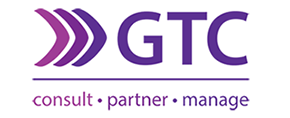The SARB’s missed opportunity
 Manty Seligman
Manty Seligman
Director – Asset Management
_______________________________________________________________________________________________________
A case for a 1% rate cut to stimulate economic growth
 Determining and managing a country’s monetary policy is complex. There are many influencing factors. There are even more desired outcomes which ordinarily include stability and growth. This is the job of each country’s central bank.
Determining and managing a country’s monetary policy is complex. There are many influencing factors. There are even more desired outcomes which ordinarily include stability and growth. This is the job of each country’s central bank.
Locally, the South African Reserve Bank (SARB) is tasked with maintaining inflation targets and currency stability, while fostering economic growth. Recent decisions by the SARB have however sparked debate among economists and policymakers alike, with the contention that the South African central bank has missed the opportunity of creating policy certainty and kick-starting the economy by only cutting lending rates by 25bps on 19 September.
Amongst many other opinion makers, GTC contends that a more aggressive cut of 1% would have conveyed an appropriately positive message of relaxed fiscal discipline with sustained lower interest rates, showing the SARB’s confidence in global inflation being under control whilst the rand is sufficiently strong so as not to require an abrupt reversal of policy. The conservative (and some would contest that it was timid) quarter of a percent rate cut which should progress over time with further cuts, did not communicate this same message, and has yet to achieve any stimulatory results.
The current economic landscape
 South Africa’s economy has been grappling for a long time now with numerous challenges, including high unemployment rates, sluggish GDP growth, and previously persistent inflation. According to the latest from Stats SA, the country’s unemployment rate hovers around 34%, one of the highest in the world. This dire situation has been exacerbated by the lingering effects of the COVID-19 pandemic, supply chain disruptions, and rising global commodity prices. With economic growth stagnating, the need for stimulus has never been more pressing.
South Africa’s economy has been grappling for a long time now with numerous challenges, including high unemployment rates, sluggish GDP growth, and previously persistent inflation. According to the latest from Stats SA, the country’s unemployment rate hovers around 34%, one of the highest in the world. This dire situation has been exacerbated by the lingering effects of the COVID-19 pandemic, supply chain disruptions, and rising global commodity prices. With economic growth stagnating, the need for stimulus has never been more pressing.
In this context, analysts and business leaders alike have argued for a decisive, proactive approach from the SARB. GTC contends that a 1% reduction in the lending rate could have served as a catalyst for economic recovery, enabling businesses to invest, consumers to spend, and ultimately economic growth to be stimulated.
Encouraging investment and consumption
Lowering interest rates makes borrowing cheaper for businesses and consumers. With a 1% cut, businesses would have more incentive to invest in capital, technology, and workforce expansion. This increased investment would create jobs and drive innovation. Similarly, consumers would benefit from reduced loan and mortgage repayments, potentially boosting discretionary spending in the economy.
 Certain business sectors, such as retail, manufacturing, and construction, are particularly sensitive to interest rates. A rate reduction would stimulate these sectors, all of which have been lagging, affected by (amongst other things) the high cost of borrowing. For instance, the construction industry, vital for job creation, could have seen increased activity with lower financing costs, leading to new projects and employment opportunities.
Certain business sectors, such as retail, manufacturing, and construction, are particularly sensitive to interest rates. A rate reduction would stimulate these sectors, all of which have been lagging, affected by (amongst other things) the high cost of borrowing. For instance, the construction industry, vital for job creation, could have seen increased activity with lower financing costs, leading to new projects and employment opportunities.
Supporting Small and Medium Enterprises (SMEs)
SMEs are crucial within South Africa’s economic landscape, yet they often struggle to access affordable financing. A 1% rate cut in borrowing rates would have made loans more accessible for these businesses, allowing them to expand operations, hire new employees, and contribute to the overall economy. Supporting SMEs is particularly important in South Africa, where they account for a significant portion of employment.
Global context
Many central banks worldwide have been adopting more accommodative monetary policies to combat economic slowdowns than South Africa. In the US, despite already experiencing growth in jobs and an expanding economy, went with a 50 bps (0,5%) cut off a far lower lending rate than our own. The SARB’s decision to cut marginally by only 25 bps (0,25%), in contrast to global trends, raises concerns about our country’s competitiveness – and even more so about any Government policy to be competitive. A 1% rate cut would have stimulated the economy (even though it may impact the currency and inflation negatively) and better aligned South Africa with international best practices, potentially attracting foreign investment and improving investor confidence.
The Interest rate differential – South Africa vs USA
A crucial aspect of the SARB’s decision-making process is the interest rate differential between South Africa and the United States, particularly in the context of inflation. Over the last few years, the US Federal Reserve has been adjusting rates in response to rising inflation, which our central bank has followed suit on. This has led to a sustained and pronounced interest rate gap between the two countries. This was both in an effort to maintain the value of the rand and to ensure that inflation did not rise significantly in SA.
Understanding the differential
 The nominal rate set by the SARB has often been significantly higher than that of the US. This disparity is primarily due to South Africa’s historically higher inflation rate. While the US grappled with its own inflation concerns, its rates were comparatively lower, partly reflecting more stable economic conditions. The inflation differential between the two countries is currently as low as 1,5% on core inflation, yet our government bond rate differential with the US treasury market is just short of 6% in the 10 year area of the curve.
The nominal rate set by the SARB has often been significantly higher than that of the US. This disparity is primarily due to South Africa’s historically higher inflation rate. While the US grappled with its own inflation concerns, its rates were comparatively lower, partly reflecting more stable economic conditions. The inflation differential between the two countries is currently as low as 1,5% on core inflation, yet our government bond rate differential with the US treasury market is just short of 6% in the 10 year area of the curve.
This disparity shows a rare opportunity to cut rates without having a large impact on the currency, where a blow out of the rand/dollar may otherwise occur.
Confidence and risk spread
The current wave of general optimism in SA on the back of the amongst other things the GNU and the stability of power supply, have created an environment of reduced risk for foreign investors. The risk premium that is inherent in our interest rate spread has not narrowed and is a variable that has not gone unnoticed by foreign investors. This is a large contributing factor to the prevailing strength of the rand.
Inflation differential
The inflation rate in South Africa has fluctuated though has consistently been higher than that in the US. When inflation in South Africa exceeds that of the US, it creates a situation where the SARB’s higher interest rates can deter fixed investment and borrowing. A 1% cut in the lending rate could have reduced the differential, making South African assets more attractive to both domestic and international investors.
Putting this in some perspective, the US Fed’s reduction of 0.5% from 5.5% to 5.0% represents a 9% change. The 0.25% adopted by the SARB from 8.25% to 8.0% makes only a 3% difference.
Investment implications
A lower interest rate environment in South Africa would inevitably lead to increased capital inflows, as investors seek returns relative to the inflation-adjusted rates. This scenario is particularly vital for a developing economy like South Africa, where attracting foreign direct investment can catalyse economic growth. With (only) a 1% rate cut, the SARB could have positioned the country as a more appealing destination for investment relative to the US showing confidence and opportunity.
The risk of capital outflow
It is always true that some investors will seek better yields elsewhere, once a meaningful rate cut has been made, and this capital flight could weaken the rand and exacerbate inflationary pressures, further complicating any SARB objectives. It is however our supposition that the risk of outward capital flows versus the growth opportunity provided would be a risk well worth taking in a global environment where many central banks are cutting rates, taking on this same risk.
The risks of maintaining high rates
While the SARB has cited inflationary pressures as a reason for maintaining interest rates, it is essential to consider the broader economic context. High interest rates do stifle growth by discouraging borrowing and spending. The trade-off between controlling inflation and stimulating growth is delicate, however, the SARB’s choice of prioritising the former may lead to prolonged economic stagnation… a scenario we as a country can ill afford.
Consumer confidence
 High-interest rates erode consumer confidence. Individuals who fear increased costs associated with loans and mortgages are less likely to spend, leading to a vicious cycle of low consumer activity and subsequent economic decline. A substantial rate cut would have sent a positive signal to consumers, encouraging them to re-enter the market and contribute to economic vitality.
High-interest rates erode consumer confidence. Individuals who fear increased costs associated with loans and mortgages are less likely to spend, leading to a vicious cycle of low consumer activity and subsequent economic decline. A substantial rate cut would have sent a positive signal to consumers, encouraging them to re-enter the market and contribute to economic vitality.
Long-term economic growth
Stagnation today can lead to more significant challenges tomorrow. By failing to cut rates, the SARB risks creating a cycle of low growth that can have lasting implications for the economy. Over time, lower growth rates can lead to reduced tax revenues, higher public debt, and increased social pressures from unemployment and poverty.
The SARB’s decision to reduce lending rates by less than our trade partners, amid a stagnant economy represents a missed opportunity to catalyse growth.
Stand up and be counted
As South Africa continues to navigate a challenging economic landscape, the SARB must reconsider its strategies, aligning monetary policy with the urgent need for economic revitalisation. By adopting a more flexible, the SARB can fulfil its dual mandate of maintaining price stability while fostering sustainable economic growth, ultimately benefiting all South Africans. Surely an economy with job creation and stimulus that puts bread on the table has to be preferred to a moderately higher inflation rate.
Whilst the US dollar is weak and South Africa’s growth is low, bold and decisive central bank leadership is needed to steer our economy onto a path of sustained strong growth.







